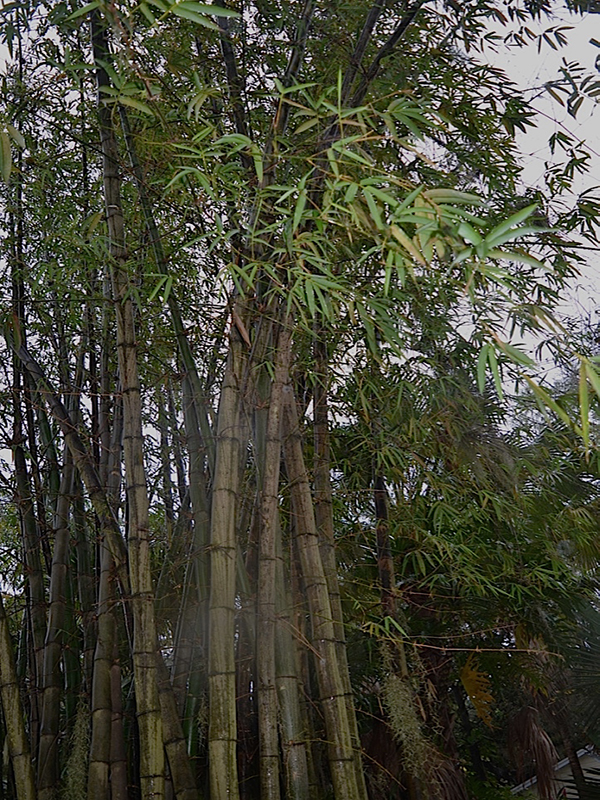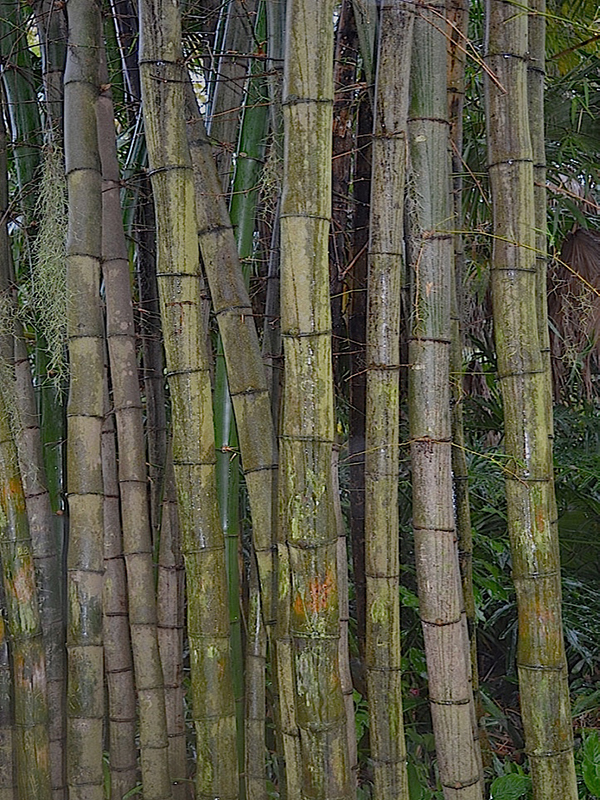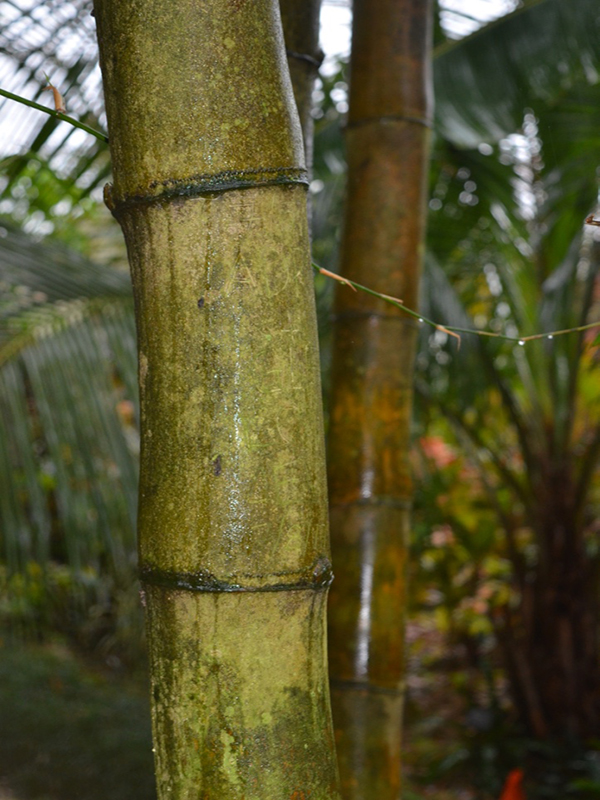
Perennials > Bambusa > Bambusa vulgaris > Bambusa vulgaris
Bambusa vulgaris
Common Bamboo
Origin: Native of tropical Asia (southern China and Madagascar) but widely planted throughout the tropics.
| Family |
| Poaceae |
| Genus |
| Bambusa |
| Species |
| vulgaris |
| Category |
| Perennials |
| Type |
| Tree (evergreen), Shrub (evergreen) |
| Synonyms |
| Leleba vulgaris (Schrader ex J. C. Wendland) Nakai, J. Jap. Bot. 9: 17. 1933. |
| USDA Hardiness Zone |
| 10a - 11 |
| Canadian Hardiness Zone |
| Requires cold season protection under glass. |
| RHS Hardiness Zone |
| H3 - H1c |
| Height |
| 10 – 20 m |
| Spread |
| 9 - 12 m |
Photographs
Description and Growing Information
Flowering Period
| Landscape |
| Planted as fences and hedges. It is also planted as a measure for erosion control. |
| Cultivation |
| Plant prefers a moist, fertile, humus rich soil in full sun or dappled shade in warm humid conditions, succeeds in a range of soil types. |
| Habitat |
| Grows mostly on river banks, road sides, wastelands, and open ground. |
| Bark/Stem Description |
| Bambusa vulgaris culms are bright green, glossy, erect below and arching above and have an average height between 10-20 m. Internodes are 25-35 cm long, and have an average diameter of 4-10 cm. Wall thickness ranges between 7-15 mm. Nodes are prominent, of which the lower ones are often with a narrow ring of roots and covered with brown hairs. |
| Leaf Description |
| Narrow leaves which are on average 15-25 cm long and 2-4 cm wide. |
| Flower Description |
| Flowering is uncommon in Bambusa vulgaris. When a stem flowers, it produces a large number of flowers, but no fruit. |
| Texture Description |
| Several to many clustered branches with 1-3 larger dominant branches. |
| Notable Specimens |
| Harry P. Leu Gardens, Orlando, Florida, United States of America. |
| Propagation |
| Propagate through clump division, by rhizome, stem and branch cutting. |
| Ethnobotanical Uses (Disclaimer) |
| Used for a variety of purposes, primarily for use in light construction such as houses, huts, boats, fences, scaffolding, furniture, musical instruments and handicrafts. The leaves are used to treat heart problems and malaria. |
References
Tropical Plants Database, Ken Fern. tropical.theferns.info. 2019-05-19.


